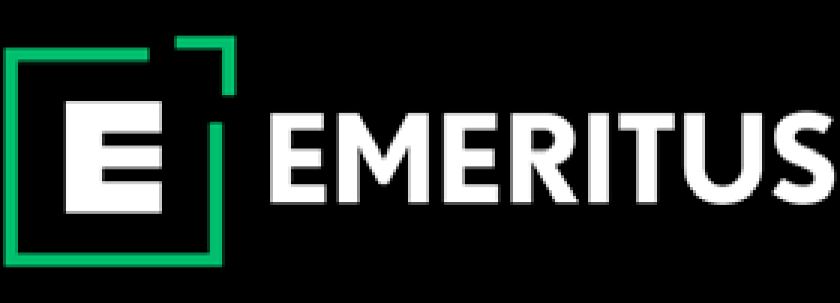Learn How to Navigate Through the J Curve With 5 Best Examples

- What is the J Curve, and Why is it Important for Businesses?
- How Did These 5 Successful Companies Navigate the Challenges of the J Curve?
- What are Some Common Pitfalls to Avoid When Facing the J Curve in Business Growth?
- How Can Entrepreneurs Apply the Lessons Learned From These Successful Companies in Managing Their Own J Curve?
“Fail fast, learn faster” is common business advice, especially for first-time founders. It recommends entrepreneurs test their ideas in the market initially and make reasonable mistakes for faster learning and better growth. This also allows businesses to allocate their resources better and save time. The advice is based on the concept of the J curve, which explains that startups experience challenges or losses initially followed by significant growth. Let’s understand its meaning and J curve use cases in detail.
What is the J Curve, and Why is it Important for Businesses?
The J curve effect is a popular phenomenon in economics and private equity that describes how the value of a currency depreciates over a period and grows exponentially. When represented on a graph, it resembles a J figure, a tick mark, or a hockey stick. Hence, the J curve is also called the hockey stick growth.
This concept is also applicable to startups. At the initial stages of their journey, startups often experience challenges or temporary setbacks leading to a decline in revenue or growth. The graph goes down slowly, allowing startups to navigate challenges and then experience faster growth.
Some of the best J curve use cases are:
- Helps businesses understand customer needs better and offer better services
- Enables better market penetration after navigating through challenges
- Strengthens team bonding and culture
How Did These 5 Successful Companies Navigate the Challenges of the J Curve?

Let’s understand the meaning of the J curve and how companies navigate through it with the help of specific examples.
1. OYO
OYO Hotels, one of the most popular hospitality brands in India, is an excellent example of how organizations navigate the J curve. It was founded in 2012 by Ritesh Agarwal as Oravel Stays, a platform for booking budget accommodation. However, in 2013, Oravel Stays was rebranded as OYO Hotels, and its business model changed from a booking platform to a hotel chain. The company leased properties to provide accommodation to guests.
Over the years, OYO became a multinational brand by expanding its operations in Malaysia, the US, Europe, and other countries. However, it faced multiple legal disputes in foreign countries due to breach of contracts. Even in India, there were many complaints against OYO for poor customer experience and non-existent listings. The company made several changes to its leadership team for better management and customer service.
It also created several brands, such as OYO Townhouse, OYO Vacation Homes, and OYO Life—all providing different types of accommodations. Therefore, OYO’s hockey stick business plan inspires other startups to prioritize customer needs and offer a core value proposition (budget accommodation in this case). It also demonstrates how localization can help businesses grow.
2. Zomato
Similar to OYO, Zomato also started with a different business model—providing online food menus on a website and restaurant directories. It was called Foodiebay when it started in 2008. However, in 2013, founders Deepinder Goyal and Pankaj Chaddah transformed it into an online food delivery platform. It provides food delivery at the doorstep to users through a wide network of delivery partners, charging fees from users and commissions from restaurants.
Zomato also expanded its operations to different countries and acquired many startups, making it a large global brand. However, it was facing losses for several years primarily due to supply chain disruptions and high competition. The company also had to shut down its operations in over 200 Indian cities. However, in 2023, Zomato showed remarkable growth and generated huge profits.
If you are an early-stage startup founder, one of the best startup lessons for a hockey stick business plan you can learn from Zomato is taking a step back. Increasing industry competition and changing customer demands can make the future path seem blurry. However, every once in a while, founders should take a pause, reflect on their decisions, plans, and ideas, and prioritize business growth.
3. CashKaro
CashKaro is a leading brand in India that provides cash back and payment deals on online or e-commerce purchases. It started in 2011 and has partnered with over 1,500 leading retail brands in India. CaskKaro’s business model involves charging commissions from partner retail brands. A significant portion of this commission is provided as cash back to the customers.
However, a few years after its launch, consumers started complaining about delays or lack of cashback from the refund. The company’s legitimacy was also questioned on online platforms, leading to a negative reputation and huge losses. The company gradually picked pace. It generated over Rs. 200 crore revenue in 2023. In December 2023, the company also announced that it is set to venture into offering loans and financial instruments.
Therefore, CashKaro’s J curve journey is a prime example of how businesses should always stay updated with the trends and look for market opportunities to diversify their offerings and increase revenue.
4. Blinkit
Grofers, a grocery-delivery startup, rebranded itself as Blinkit. It started as a hyperlocal grocery delivery startup in 2015. Even though it experienced steady growth in the initial few years, Grofers started experiencing downloads within a few years. It was primarily due to rising competition, operational challenges, and inventory management issues. Moreover, Grofers also opened several grocery stores at different locations for physical shopping. However, it incurred huge losses and had to shut down its stores in multiple locations.
In 2022, Zomato acquired Grofers and rebranded it as Blinkit, a platform that delivers groceries in nearly 10 minutes, give or take. Now, it operates on a franchise model to provide quick deliveries. Moreover, it delivers home and personal utility items and groceries, increasing its usage. Therefore, continuous innovation is one of the most valuable learnings from Blinkit’s hockey stick growth.
5. BookMyShow
BookMyShow started as Big Tree Entertainment Pvt. Ltd., a software for reselling movie tickets in 1999. However, the company faced several challenges within two years and the company’s headcount was reduced by 96%.
However, it later transformed into an entertainment ticketing platform and also started offering tickets for sports, music, and cloud-based events. The company again faced challenges during the pandemic when the theaters were shut down and incurred huge losses. To curb the losses, it launched BookMyShow Online, a video streaming platform to watch live music and comedy shows.
Now, it has grown as one of the most popular platforms in India for booking entertainment tickets. The company transformed its tech offerings to increase its revenue.
ALSO READ: What is Enterprise Value Stream Management? How Does it Impact Organizations?
What are Some Common Pitfalls to Avoid When Facing the J Curve in Business Growth?
Experiencing the J curve is a common occurrence in entrepreneurship journeys. Therefore, entrepreneurs should adopt a strategic approach. Here are a few common pitfalls to avoid for efficient hockey stick business growth.
1. Diverting From the End Goal or Business Values
Founders may also lose track of their business goals or divert from their business values to make their business survive. This makes it difficult to streamline efforts and see the impact during the J curve.
2. Lack of Communication
Another pitfall that startups must avoid while experiencing a J curve is a lack of communication. Business leaders should inform their teams and other stakeholders about the downward arc of the curve.
3. Unable to Adapt to Changing Technologies/Trends
Many startup founders are overconfident about their products and fail to adapt to changing customer needs and technology trends. This often makes their product irrelevant in the market. Therefore, while having faith in your product is important, it is also important to embrace new technologies for growth.
4. Not Creating a Financial Plan
Entrepreneurs often take time to understand and acknowledge the signs of the J curve growth. Consequently, there are financial challenges that may lead to startup failure. Therefore, as soon as you see a business slowdown, prepare a financial plan to keep the business afloat.
5. Not Seeking Support
One of the biggest mistakes most founders make in their hockey stick business journey is trying to manage everything alone. It is probably because they are embarrassed to seek help from others or might not find the right support. When the journey becomes challenging, don’t hesitate to connect with mentors, peers in the industry, or business coaches to get solutions or even new ideas and perspectives.
ALSO WATCH: Crafting a Winning Business Strategy: Tips and Techniques for Sustainable Growth
How Can Entrepreneurs Apply the Lessons Learned From These Successful Companies in Managing Their Own J Curve?

Here is how modern startups can apply J curve learnings.
1. Focus on Research and Development
Continuous innovation is crucial for startups to gain a competitive advantage. Therefore, entrepreneurs must focus on building a flexible and scalable technology stack for market research, development, and innovation.
2. Prioritize Customer Experience
The most common lesson across all the above hockey stick business plan examples is understanding customer needs and offering them exceptional experience. This helps businesses gain customer loyalty and grow. You can do this by adopting a user-centric approach and regularly collecting and analyzing customer feedback.
3. Customize Your Approach
While the lessons from the J curve growth from the above-mentioned companies can be helpful, they may not hold the same relevance for your business. That is because each company has different goals and business visions. Therefore, you can analyze the growth journey of these companies and see how they implemented it to become market leaders. However, customize the strategies to align them with specific business goals, values, and vision.
ALSO WATCH: Unleash Success: Mastering Expert Secrets for Business Growth
Market trends and customer expectations have been evolving rapidly after the pandemic. Therefore, it is important for businesses to do market research, understand emerging trends and technologies, leverage data, become agile, and focus on innovation to grow. Emeritus’ online business management courses can help you learn relevant skills and get practical leadership training to scale your business.
Write to us at content@emeritus.org













